In the early hours of Monday morning, on the fourteenth day of our trip, we left the relative comfort and familiarity of Kiboko Camp behind to set off on a week of travels to the Maasai Mara and beyond. Packing our bags and saying goodbye to our new friends felt strange, knowing that we were only halfway through the trip and our most exciting experiences were likely still to come. We had little idea of what to expect, and Enoch was being as cagey as ever, giving cryptic answers to simple questions like “Where are we going?” and “Where will we sleep tonight?”
I decided the best approach was to sit back and let things happen, so I leafed through my guidebook and read up on the geography of the Great Rift Valley while the ceaseless vibrations of the jeep lulled me into a drowsy half-slumber. Here’s what I learned about the Great Rift Valley before I drifted out of consciousness: it’s a vast tectonic chasm stretching from the Red Sea all the way down to the Zambezi river, some of the earliest fossils of our hominid ancestors have been found there, and no amount of reading can prepare you for the visceral feeling of seeing it in person.
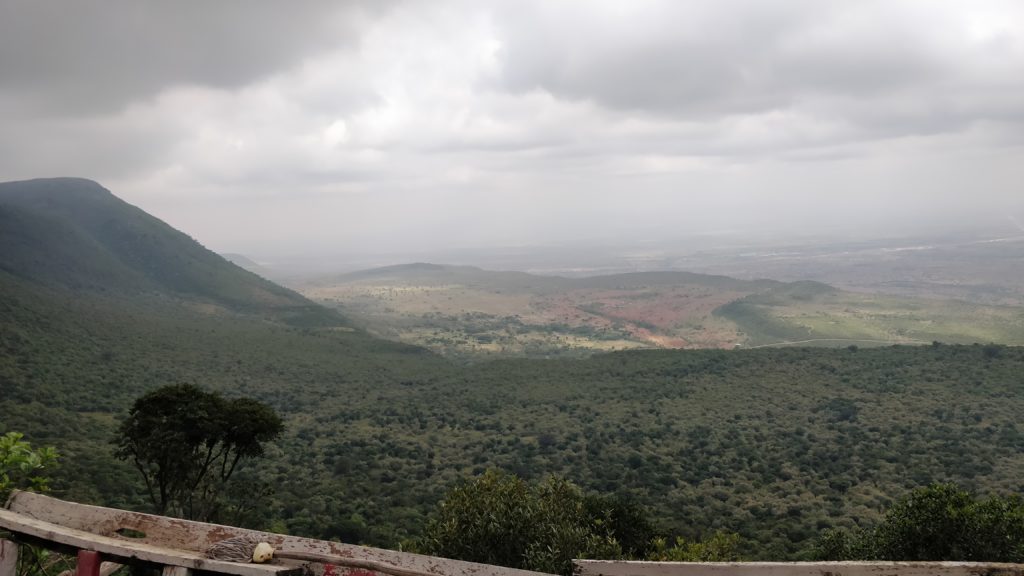
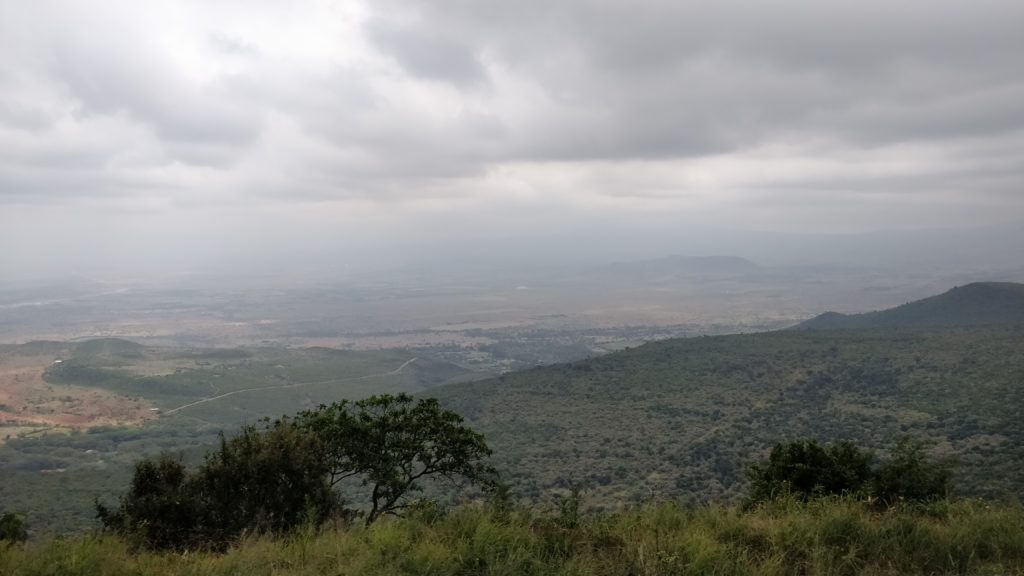
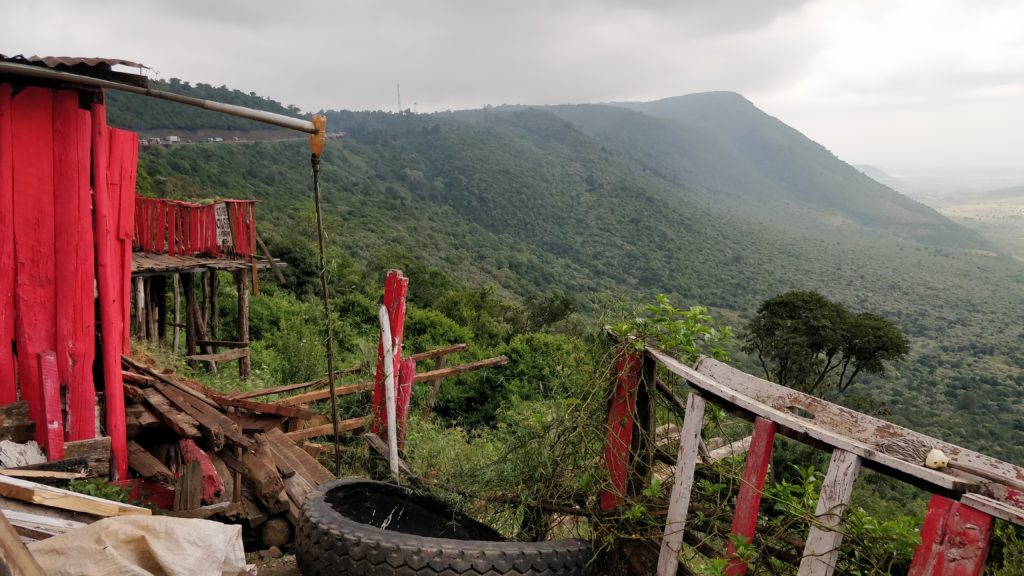
When I resurfaced, the first thing I realised was that we were quite high up. Then I looked out of the window, and a whole host of other overwhelming realisations came crowding in as the valley opened up beneath us. The Great Rift Valley is the kind of landscape that makes you audibly gasp. Though I’ve included a few photos to give some sense of the view laid out before us, it’s almost impossible to capture the sheer scale of it all in a single static image. Picture this: you’re driving along at fairly high speed, as is the Kenyan way, with a mountainous wall on one side; on the other side of the road, the ground suddenly just falls away into a dizzying riot of valleys and escarpments, densely carpeted with trees and stretching out for miles in every direction. It feels like a glimpse into a time before recorded history, or even the rudiments of language – you expect to hear the distant roar of a dinosaur, rather than the rumbling of engines.
In spite of the throat-clenching, vertigo-inducing setting, a number of enterprising Kenyans had set up shop along the road. With space at such a premium, considering the road was really just a small outcropping on the edge of a mountain, the shopkeepers had come up with the ingenious solution of simply building outwards over the valley. A series of rickety-looking wooden platforms jutted out into the verdant abyss, tenaciously clinging onto the edge of the road while trucks hurtled past and unperturbed hawkers strolled back and forth trying to sell woolly hats and Maasai curios.
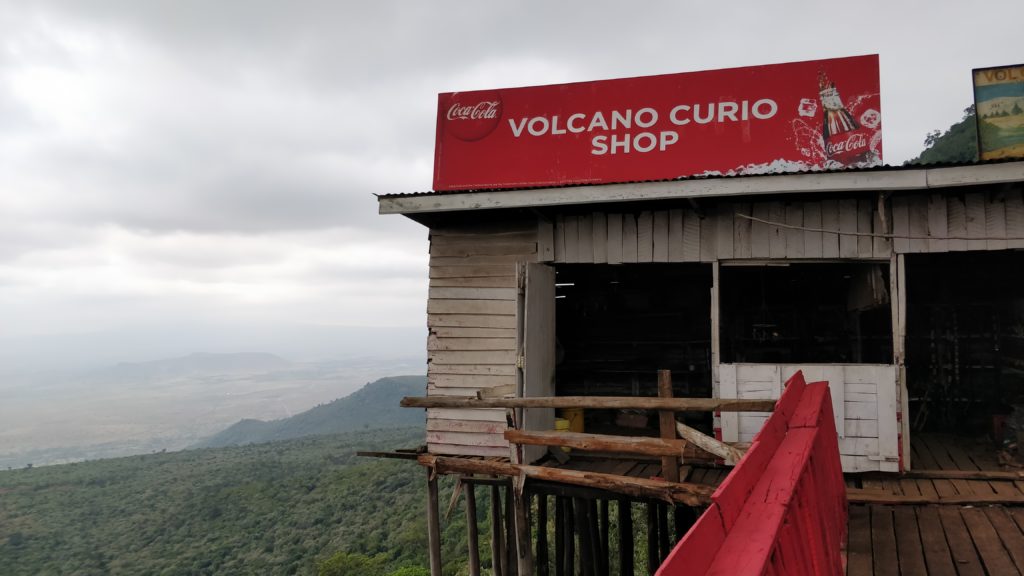
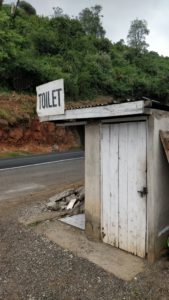
The valley passed almost as quickly as it had appeared, and soon we found ourselves in the town of Narok, where we stopped for lunch. As we settled down to our food, Enoch introduced us to Sara, a colleague of his who would be joining us for the next few days in the Maasai Mara. It transpired that she had never been there before either, so it would be a first time for all of us. We chattered animatedly amongst ourselves over lunch, exchanging predictions about the wildlife we hoped to see.
As we left Narok behind to embark on the last leg of our journey, the roads became bumpier and the landscape wilder. Human settlements were few and far between, scattered around vast stretches of open plains and rocky scrubland. Of the small towns and villages that we did pass, almost all featured ramshackle hotels and bars proudly declaring their vicinity to the Maasai Mara; as perhaps the most popular and famous location for wildlife viewing in all of Kenya, its name quite literally precedes it.
We had been driving for some time by now, and fatigue was beginning to set in, but Caterina was positively jubilant – never before had she been able to dedicate so much time to her knitting. Inexplicably, she had spent most of the last week knitting a yellow woollen scarf, giving some vague justification about getting started on the Christmas presents early, and it had gradually become something of an obsession. Given a single spare minute, she would whip out the needles and get to work, so long car journeys were practically bliss as far as she was concerned. While we rattled our way through off-road paths, intermittently stopping to ask local Maasais where on earth we were, she continued to knit with one leg hanging nonchalantly out of the window. Sitting next to her, I couldn’t help but glance at the needles with deep apprehension every time we went over a particularly sizeable bump.
Evening approached, and we were treated to the kind of picturesque sunset that should only exist in postcards and nature documentaries. Douglas Adams was entirely correct when he once noted that, contrary to all known laws of physics, the sky is simply bigger in Kenya. While the sun worked its way down to the horizon through a corona of clouds, Enoch assured us that we were finally getting close to our destination. Nevertheless, night had well and truly fallen by the time we arrived at Talek, a small settlement which serves as a starting point for game drives into the various conservancies that make up the Maasai Mara.
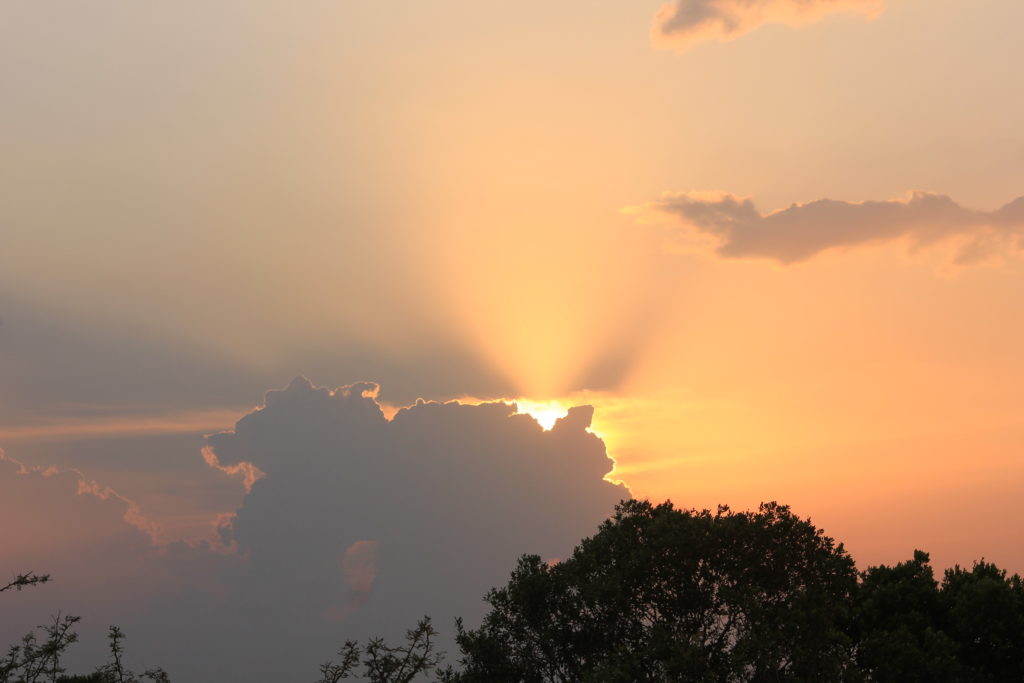
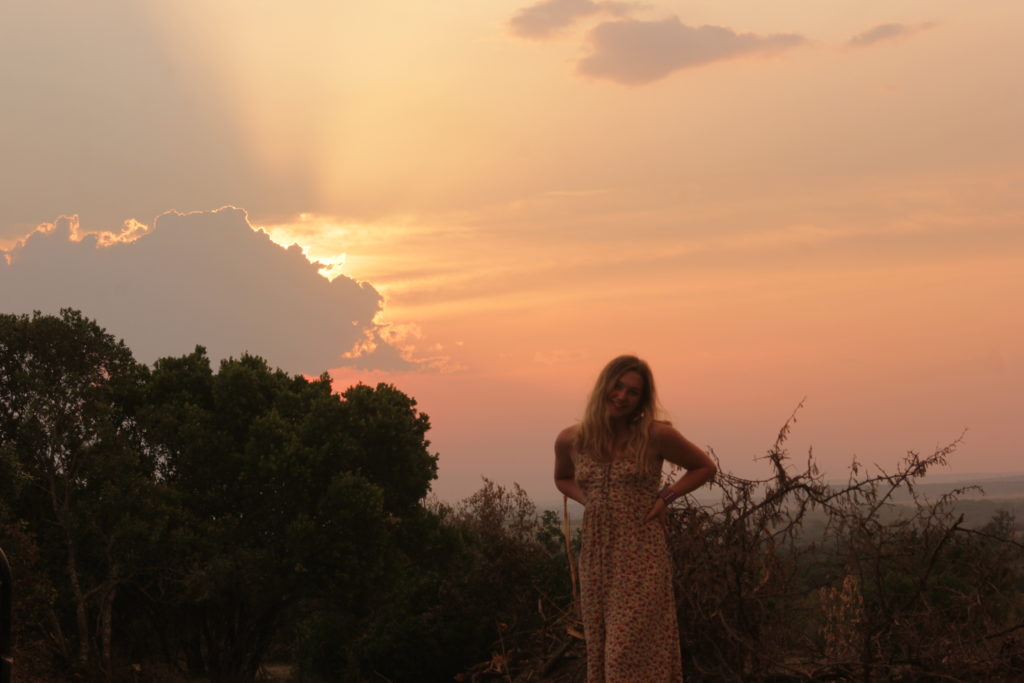
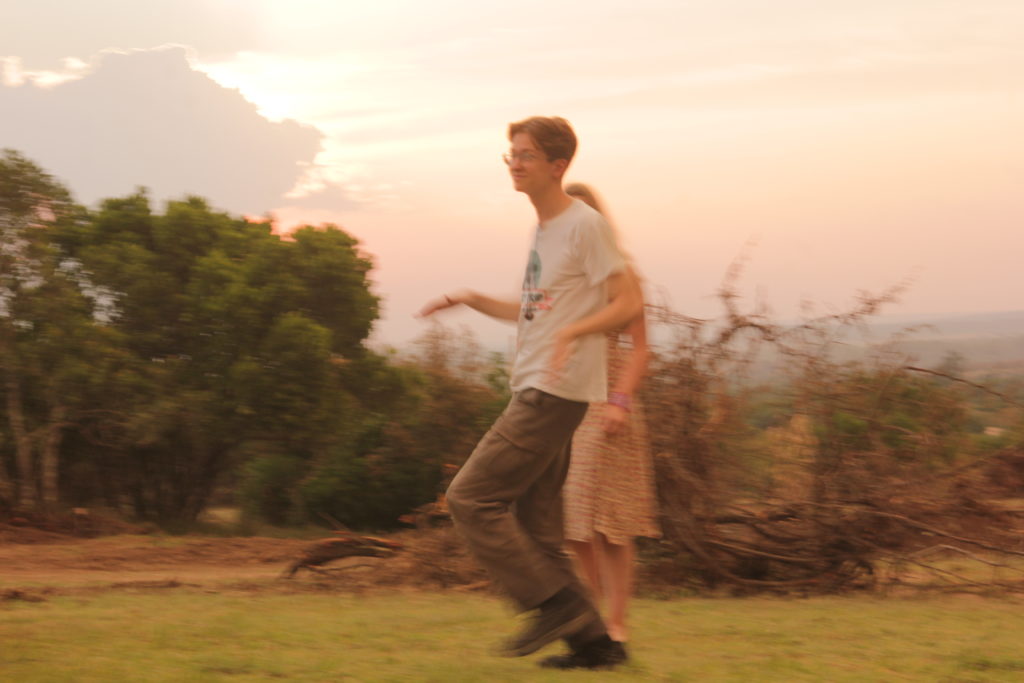
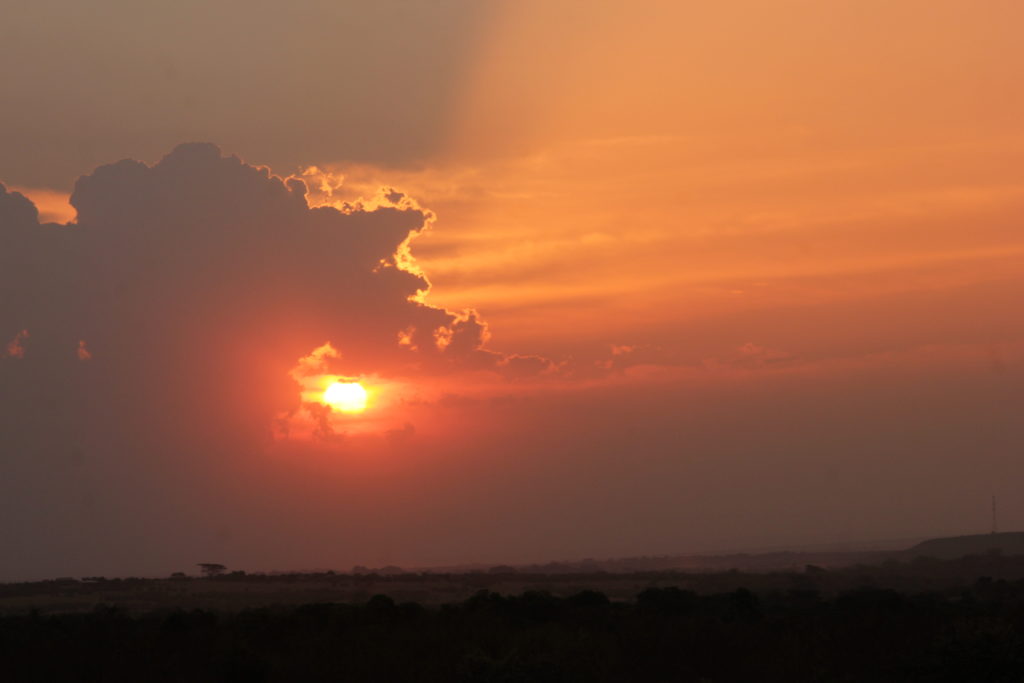
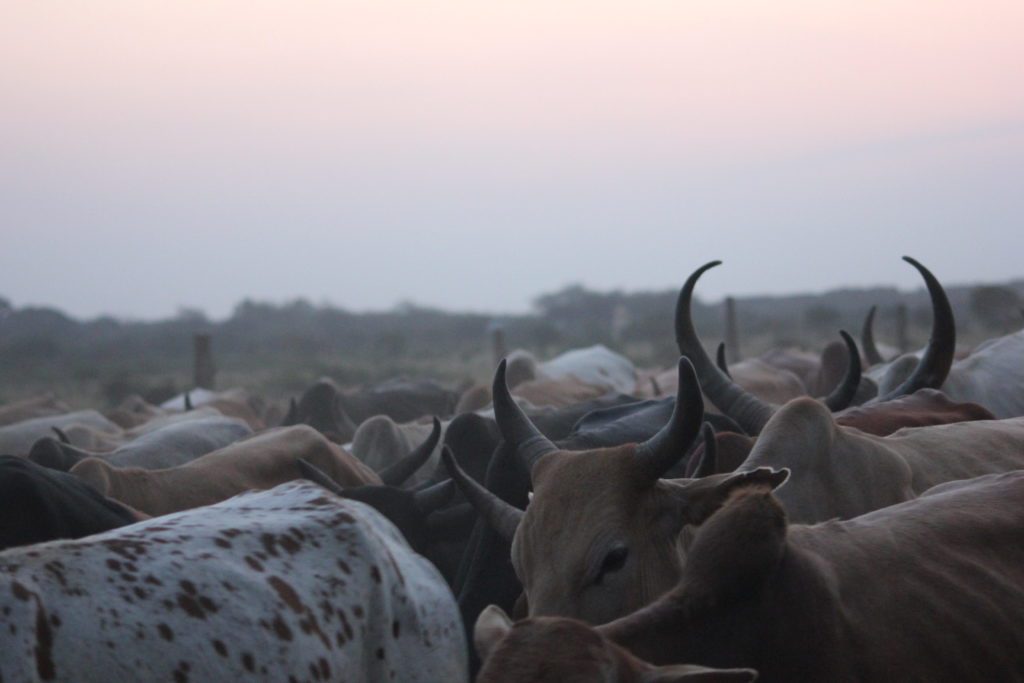
We were pleasantly surprised to discover that we were not in fact camping, as we had expected, but instead had rooms to ourselves in a charming little collection of huts that called itself G&G Hotel. There were a few more surprises in store for us before the day was through. As we hauled our things out of the jeep, we were greeted by a familiar face who had disappeared after our first few days at Kiboko Camp – Enoch Number 2! While we caught up on what he had been up to since we last saw him, we were also introduced to Jackson, a friend of Bryan’s from university. Jackson worked in the Maasai Mara, doing research on cheetahs which involved a lot of dung collection – an endless source of immature but irresistible jokes. This was the same Jackson who had previously been mentioned as Mandela’s cousin, the one who put him in touch with Bryan to begin with. Then, perhaps the greatest surprise of all: at the height of the Kenyan dry season, it began to rain.
This wasn’t just a brief shower – the inexplicably vast Kenyan sky burst wide open, and disgorged its contents with gusto. We sprinted for cover while the rain lashed down in thick sheets and arcs of lightning added to the sudden theatrics. Safe under the canopy of the little outdoor restaurant, we tucked into vegetables and ugali, making new friends and catching up with old ones over a few Tusker beers. The final surprise of the night was the best one: Mandela himself came sauntering in, wearing his prankster’s grin and brimming with stories to tell. By the time we turned in for the night we were all utterly spent, a full day’s travelling behind us. I fell asleep to the sound of the unseasonal rain, wondering what other surprises tomorrow would hold.
